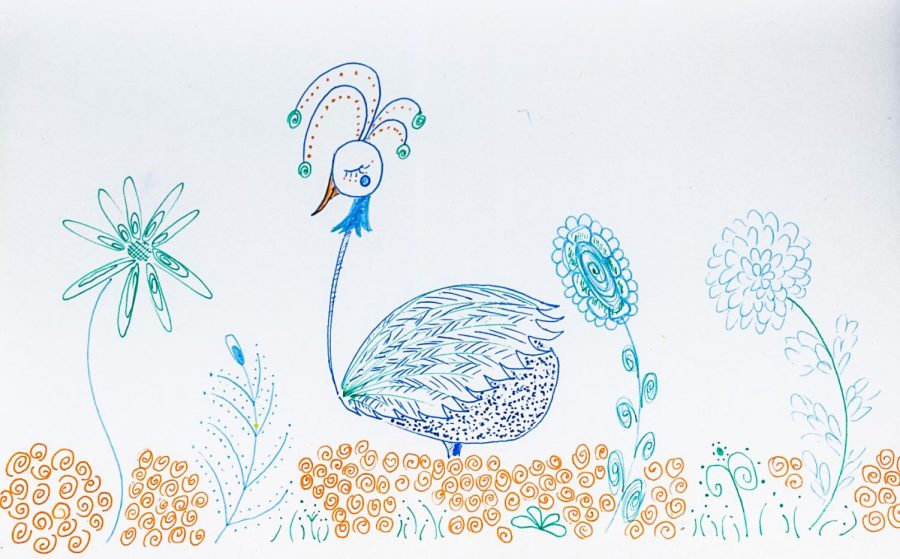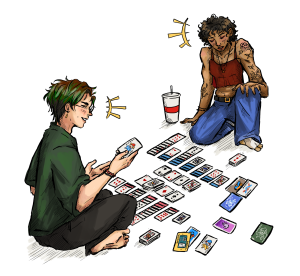Illustrating nature at Whitman
March 5, 2020
It can be easy to forget Whitman’s love for nature while everyone’s trapped inside during the cold winter months, but as the weather warms, it’s almost impossible to ignore. As the slackliners, tree-climbers and OP trip-lovers start to go back outside, so do some of Whitman’s most underappreciated appreciators of nature: the visual artists.
Heidi Chapin, Whitman’s science outreach coordinator and the permits coordinator for the Outdoor Program, took the Whitman student body’s fascination for nature drawing to the next level with the creation of her scientific illustration class. The class has run three times so far, fueled entirely by student interest.
“I had a student who learned by some friends that I had majored in art and environmental studies in college, and she was really interested in doing an independent study in nature drawing, and so she approached me and asked me if I would facilitate that,” Chapin said. “It seemed more worth it to get a group of people rather than just doing that one-on-one, so she collected a group of eight other people who had interest.”
According to Chapin, a student asked for the class to be revived two years ago after seeing a poster showcasing the work of the first class. The poster hangs in the Science building, across from room 206, and effectively shows off many of the techniques taught in class.
“[Getting the class back together] took a little while, but [the student] was really motivated, and she collected a bunch of students who were really also interested … There was a waitlist, a full class and a full waitlist of people who wanted to take it, so I asked if I could teach it again,” Chapin said, “so then I had another full class this fall with a fairly large waitlist again … it’s been a very successful class.”
For Chapin, scientific illustration serves as more than just an accurate depiction — in many ways, it can help make science more accessible.
“I think one of the places where science sometimes gets lost is in communicating it effectively, from, ‘here’s the hard science; here’s what I know, and I have learned, through my scientific process,’ to being able to communicate that with anybody else,” Chapin said. “We, as a group of science-minded people, have to be able to have that pathway to communication.”
So, why not just take a picture? Sometimes, showing less can mean a lot more.
“If you do a dissection of an animal, and you take a picture, you can’t see everything. Like, you can see what you can see, but if you’re, like, ‘I wanna talk about the lymphatic system,’ and they’re, like, ‘blalalalala,’” Chapin said. “You can’t necessarily put all the information that you can see … You have to choose what you wanna communicate with your audience, whatever that audience is and that might be something very specific.”
Senior biology major Perth Sethapanichsakul took the class this past fall because he liked doodling, but he had never taken an art class before. He brought a sketchbook with him to his interview with The Wire, filled both with pieces from the class and art he had since done on his own time. His latest was a fully-rendered pencil drawing of an iguanodon.
Sethapanichsakul said he could see a marked improvement in his art from the beginning to the end of the class, and that while it hadn’t yet come in handy for his major specifically, he had been drawing a lot more. He believes that many people could get a lot out of the class, regardless of major.
“I think the people who would get the most out of the class [are] people who already have some sort of interest in the natural world. It doesn’t have to be, like, you’re a Bio major or anything, but if you are interested in, like, birdwatching, or just, “dinosaurs” or something like that, and you want to be able to record them in a different medium, not just in photographs,” Sethapanichsakul said.
Senior biology major Laurel Richardson saw the class as an opportunity to combine two of her interests: biology and art. She said the class helped her gain new perspectives on the finer details of the natural world.
“One thing Heidi emphasized throughout the semester was how to hone our observational skills,” Richardson said. “Before starting the class, I thought I had a pretty good idea of what a leaf or insect wing looked like, but I soon realized how far-off I was. When you’re forced to closely examine and spend time drawing something, you’re constantly making little discoveries, and begin to see the things you’ve always overlooked…More than just improving your artistic skills, the class is about getting back in touch with the world around you.”
Chapin encourages interested students at any skill level to try their hand at scientific illustrations, even if they doubt their abilities.
“What I tell the students at the beginning is that, number one, we’re gonna start wherever you are. So, if you’re, like, ‘I have never drawn before,’ [or] ‘I’ve never drawn since I was in third grade ‘cause somebody told me I didn’t draw well and then I just stopped drawing’ — People have that experience,” Chapid said. “And so they come to the table with some anxiety about that, right? And I’m, like, there’s no judgment,” she said.
It’s clear that nature drawing has a place at Whitman, whether it’s in the form of the scientific illustration class, one of the few nature illustration-focused OP trips, or just a love for drawing at home — all of which are just a few of the many ways Whitman students show their appreciation for planet Earth.






